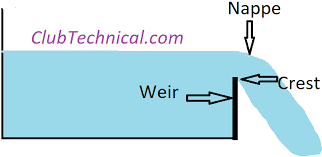15 Factors Affecting Durability of Concrete
15 Factors Affecting Durability of Concrete
A durable concrete is defined as one that performs satisfactorily under the expected exposure conditions for the specified lifespan of the structure. Understanding the various factors influencing concrete durability is essential for ensuring the long-term integrity of constructions. Below, we delve into the comprehensive array of factors that impact the durability of concrete:
Factors Affecting Durability of Concrete.
1. Cement Content
The quantity of cement in the concrete mix is a fundamental factor influencing its durability. Insufficient cement content results in a reduced water-cement ratio, compromising workability and strength. Conversely, excessive cement content can lead to issues such as drying shrinkage and alkali-silica reaction, which can significantly impair durability.
Fig 1: Cement Content
2. Aggregate Quality
The quality of aggregates used in the concrete mix plays a crucial role in determining its durability. Optimal aggregate characteristics, including shape, size, and gradation, contribute to improved concrete strength and longevity. Smooth, properly shaped particles enhance workability, while well-graded aggregates ensure denser concrete mixes, thereby enhancing durability.
Fig 2: Aggregates
3. Water Quality
The quality of water used in concrete mixing profoundly impacts the durability of the resulting structure. Utilizing clean, potable water with a pH range of 6 to 8 is essential to prevent adverse reactions that can compromise concrete integrity. Contaminants such as oils, acids, alkalies, salts, and organic materials must be strictly avoided to mitigate corrosion and deterioration.
Fig 3: Adding Water to Concrete Mix
4. Concrete Compaction
5. Curing Period
Adequate curing during the initial stages of concrete hardening is critical for optimizing durability. Proper curing procedures mitigate the risk of plastic shrinkage, drying shrinkage, and thermal effects, which can lead to cracking and reduced durability. Employing appropriate curing methods and duration is essential for maximizing concrete strength and longevity.
Fig 5: Drying Shrinkage due to Poor Curing
6. Permeability
Concrete permeability significantly influences its durability by affecting its susceptibility to water penetration and subsequent damage. Maintaining a low water-cement ratio and incorporating pozzolanic materials are effective strategies for reducing permeability and enhancing durability. Proper attention to concrete mix design and construction practices is essential to minimize permeability-related issues.
Fig 6: Capillary Absorption in Concrete Block
7. Moisture
Moisture levels in the environment can impact concrete durability, leading to phenomena such as efflorescence and moisture-induced deterioration. Effective moisture management is crucial to prevent these issues and maintain the structural integrity of concrete over time. Proper drainage, sealing, and surface treatments help mitigate moisture-related damage and enhance durability.
Fig 7: Efflorescence in Concrete
8. Temperature
9. Abrasion
Abrasion from factors such as water flow and mechanical wear can degrade concrete surfaces over time, reducing durability. Increasing compressive strength through proper mix design and surface treatments enhances concrete resistance to abrasion, thereby improving durability. Employing durable materials and protective coatings can further mitigate abrasion-related damage and extend the lifespan of concrete structures.
Fig 9: Abrasion of Concrete
10. Carbonation
Carbonation, the reaction between carbon dioxide and concrete constituents, can lower pH levels and initiate corrosion of reinforcement, leading to reduced durability. Preventative measures, such as using low-alkali cement and incorporating supplementary cementitious materials, help mitigate carbonation-induced deterioration and enhance concrete longevity.
Fig 10: Carbonated Concrete
11. Wetting and Drying Cycles
Exposure to alternating wetting and drying conditions can induce stresses in concrete, potentially leading to cracking and corrosion. Proper design considerations, including adequate reinforcement cover and use of low-permeability concrete, help mitigate the adverse effects of wetting and drying cycles on concrete durability. Employing durable materials and construction techniques enhances the resilience of concrete structures to environmental exposure.
Fig 11: Concrete affected by alternate Wetting and Drying
12. Freezing and Thawing
13. Alkali - Aggregate Reaction
The alkali-aggregate reaction can cause expansion and cracking in concrete, compromising its durability. Mitigation strategies include using low-alkali cement, non-reactive aggregates, and supplementary cementitious materials to minimize the adverse effects of alkali-aggregate reaction on concrete durability. Proper mix design and construction practices are essential for preventing alkali-aggregate reaction-induced damage and ensuring the long-term performance of concrete structures.
Fig 13: Alkali-Aggregate Reaction
14. Sulfate Attack
Sulfate attack can lead to concrete deterioration through chemical reactions with hydrated cement products. Employing sulfate-resistant cement, reducing concrete permeability, and using proper construction practices help mitigate sulfate-induced damage and enhance concrete durability. Proper site assessment and drainage measures are essential for preventing sulfate attack and preserving the integrity of concrete structures.
Fig 14: Spalling of Concrete due to Sulfate Attack
15. Organic Acids
Exposure to organic acids can adversely affect concrete durability, leading to corrosion and degradation. Protective coatings, chemical treatments, and proper maintenance practices are essential for mitigating the impact of organic acids on concrete surfaces. Employing durable materials and construction techniques helps enhance the resilience of concrete structures to organic acid exposure, ensuring long-term performance and durability.
Fig 15: Organic Acids reaction
Conclusion
In conclusion, understanding and addressing the multitude of factors affecting concrete durability are essential for ensuring the longevity and structural integrity of constructions. By implementing appropriate design, construction, and maintenance practices, the adverse effects of these factors can be mitigated, resulting in durable and resilient concrete structures that withstand the test of time.















.jpeg)


Comments
Post a Comment